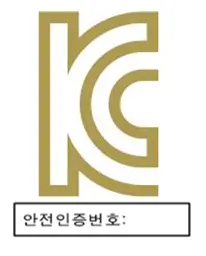
How to Obtain KCC Certification?
What is Korea KCC?
Korea KCC, short for Korea Communication Commission, is the Korean Communications Commission. According to Articles 33 of the Basic Telecommunications Act and Articles 46 and 57 of the Radio Waves Act, a broadcasting and communication equipment certification system has been established. This system mandates that products specified in Article 3 of the certification regULations for broadcasting and communication equipment must obtain kcc certification prior to manufacturing, importing, or selling.

KCC certification focuses on electromagnetic compatibility (EMC) requirements for information products and regulates wireless transmission and communication product certifications. Products under its scope include telecommunications equipment, radio frequency products, and IT equipment. The kcc mark is issued by the Korea Radio Research Agency (RRA) under the Korea Broadcasting and Communication Commission.
KCC Certification Categories
KCC certification is divided into three categories based on product type:
1. Conformity Certification: For wireless communication devices, such as telephones, modems, and fax machines.
2. Conformity Registration: For electrical appliances.
3. Interim Certification: For equipment without existing standards.
Products Requiring KCC Certification
KCC certification applies to most wireless communication products and a significant portion of electronic and electrical products coveRED by kc certification. Examples include:
1. Automatic alarm receivers installed on ships.
2. Automatic alarm telephone devices.
3. Emergency position-indicating radio beacons (EPIRBs).
4. Marine navigation radars and automatic radar plotting devices.
5. Wireless equipment for maritime mobile telephones.
6. Wireless equipment for satellite mobile communication radio stations.
(Note: This is a partial list of applicable products.)
Required Documents for Enterprises
1. Application form (provided by the certification body).
2. Product images, user manuals (in both English and Korean), and product specifications.
3. Business registration certificate.
4. Circuit diagrams or block diagrams.
5. Fully assembled product samples set to fixed frequency.
6. Description of differences between the main model and covered models in the same application unit.
KCC Label Style and New Regulations
1. Certification/registration numbers, previously starting with "KCC," are now prefixed with "MSIP."
2. For applications submitted to NRRA starting July 1, 2013, certification/registration numbers are generated automatically in the format MSIP-XXX-XXX-XXXXXXXXXXXXXX.
3. Certificates/labels issued before July 1, 2013, using the KCC-XXX-XXX-XXXXXXXXXXXXXX format can remain valid until September 30, 2013.
4. Starting October 1, 2013, all products shipped to Korea must use labels in the MSIP-XXX-XXX-XXXXXXXXXXXXXX format.
Certification Timeline
The KCC certification process typically takes 4-6 weeks.
Email:hello@jjrlab.com
Write your message here and send it to us
 Energy Storage Battery Brazil Inmetro Certificatio
Energy Storage Battery Brazil Inmetro Certificatio
 Southeast Asia Compliance Requirements for EV Char
Southeast Asia Compliance Requirements for EV Char
 Brazil ANATEL & INMETRO Certification Guide
Brazil ANATEL & INMETRO Certification Guide
 Automotive-Grade Active Crystal AEC-Q200 Certifica
Automotive-Grade Active Crystal AEC-Q200 Certifica
 How to Comply with EU GPSR
How to Comply with EU GPSR
 U.S Cosmetics Require FDA Registration for Customs
U.S Cosmetics Require FDA Registration for Customs
 Interpretation of IEC/EN/AS 62477-1:2022 Standard
Interpretation of IEC/EN/AS 62477-1:2022 Standard
 What is Amazon TIC and How Can Sellers Achieve Com
What is Amazon TIC and How Can Sellers Achieve Com
Leave us a message
24-hour online customer service at any time to respond, so that you worry!




